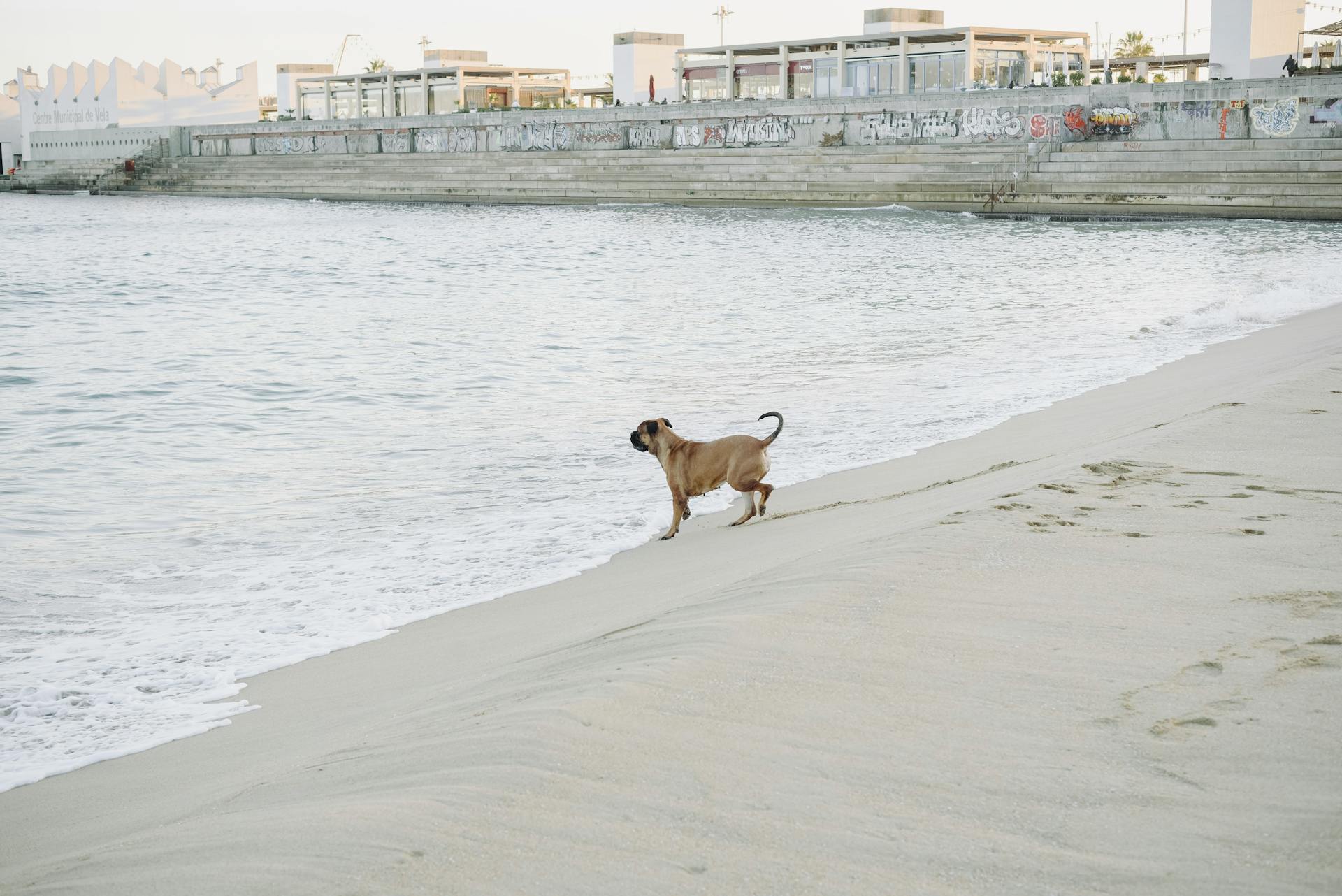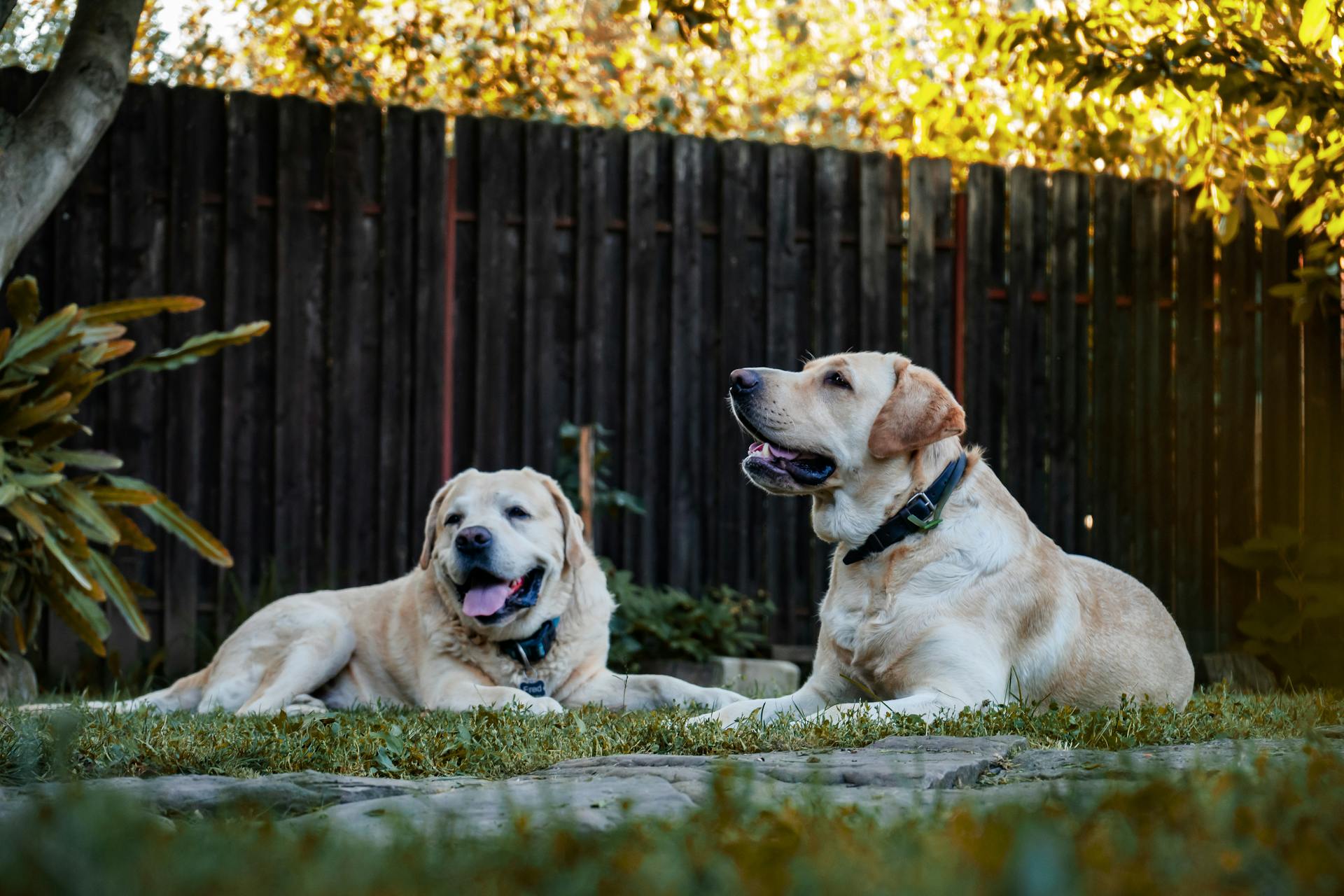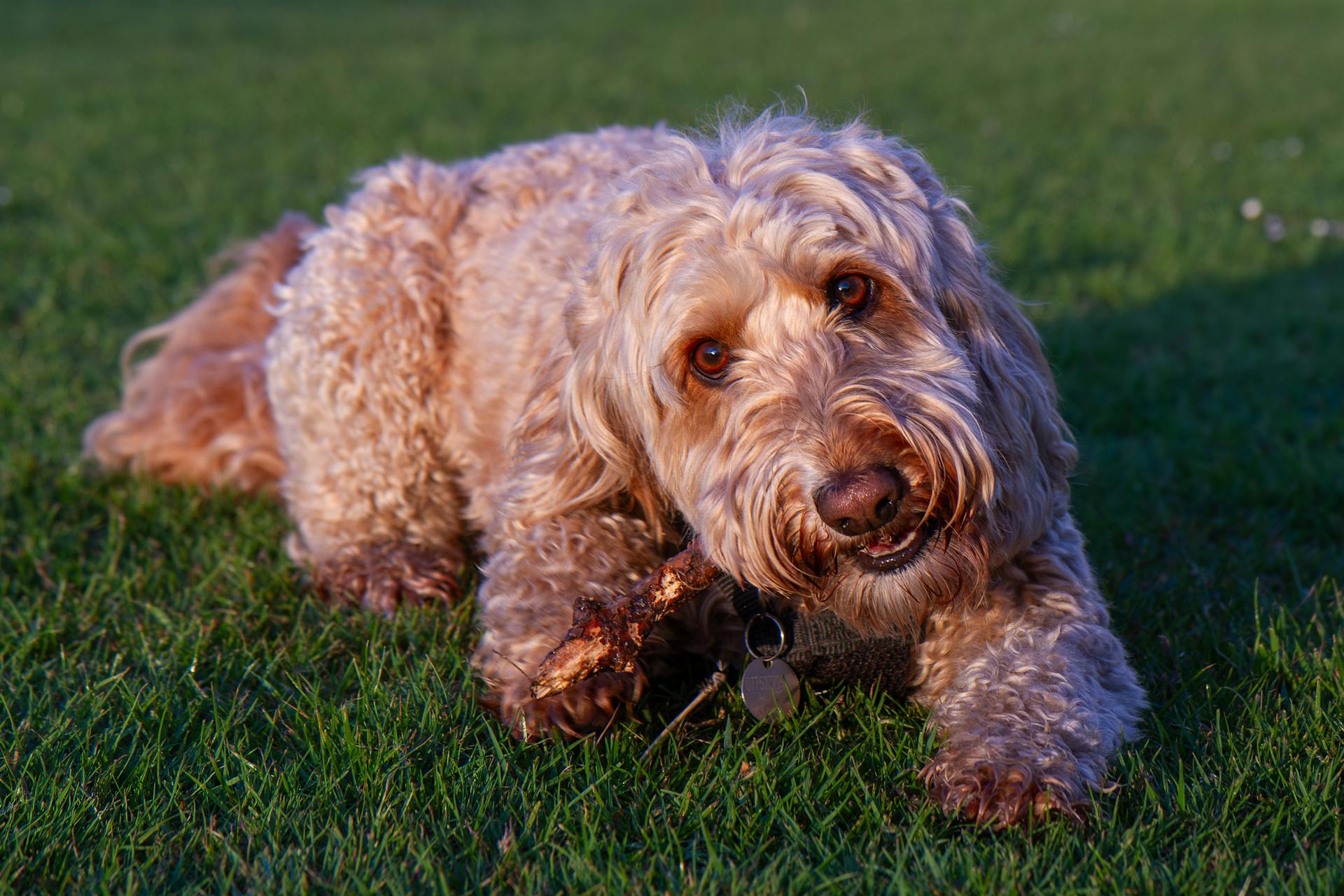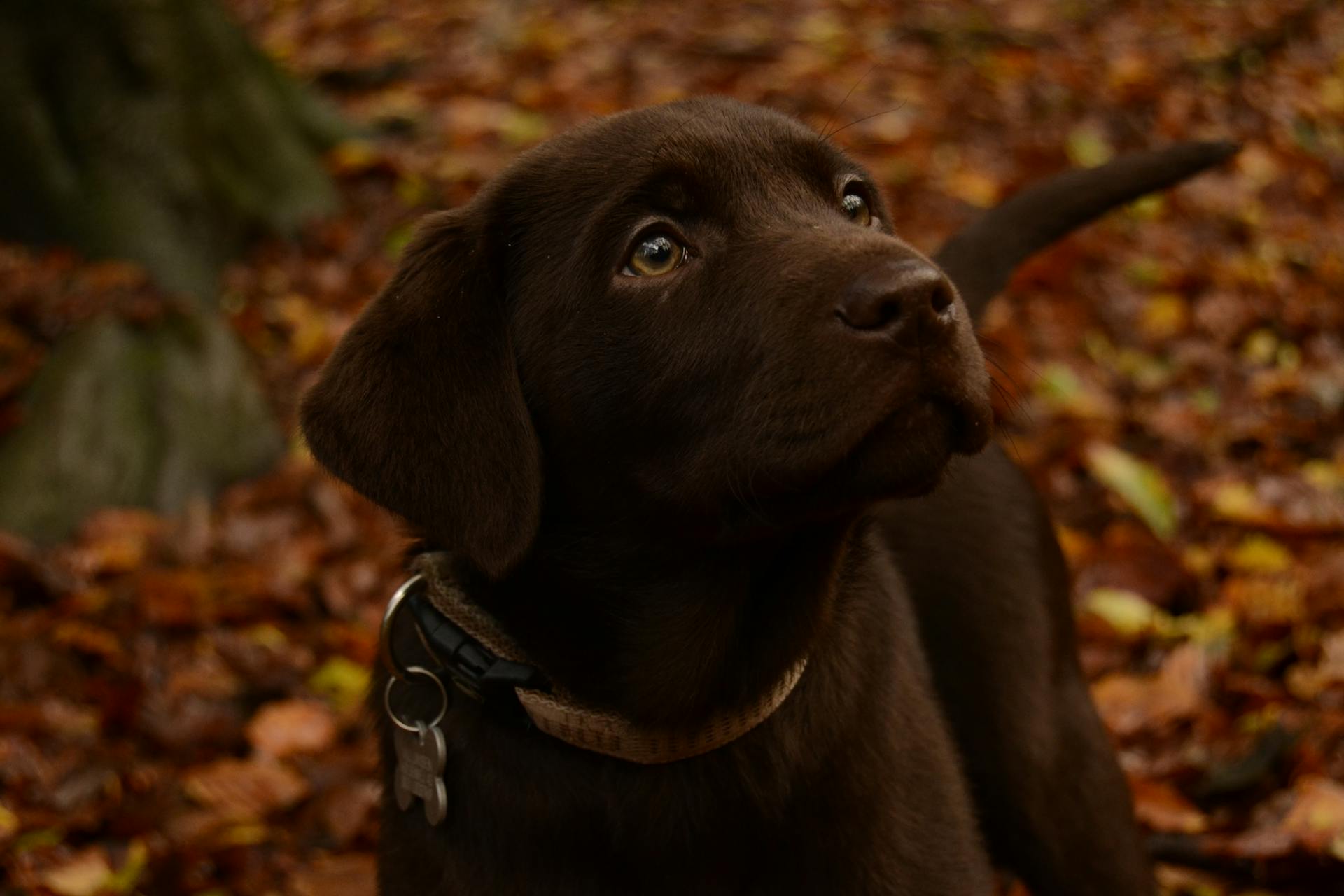
As a brown bullmastiff owner, you're probably eager to learn about the specific care and health needs of your furry friend. Brown bullmastiffs are a relatively healthy breed, but like all breeds, they're prone to certain health issues that you should be aware of.
Brown bullmastiffs are a large breed, and their size means they need plenty of space to move around. They can weigh up to 130 pounds and stand up to 27 inches tall at the shoulder. This means they need a spacious living area and regular exercise to stay happy and healthy.
To keep your brown bullmastiff in top shape, regular veterinary check-ups are essential. They should start getting regular check-ups from an early age to monitor their growth and catch any potential health issues early.
Space and Living Needs
Brown Bullmastiffs can thrive in a range of settings, but they do require a secure, fenced yard to prevent them from jumping or running off.
A high, sturdy fence is essential, as a running Bullmastiff can knock down loose panels. You should also consider the size of your yard, as Bullmastiffs need space to exercise.
Bullmastiffs are not ideal for apartments, but they can live there if they receive enough daily exercise. They'll spend most of their time lounging around, but it's still important to provide regular walks and playtime.
As a giant dog breed, Bullmastiffs can work out too much, especially when they're young and still growing. It's not good for them to have repetitive, stressful strain on their joints, so nice, long walks are a better option than jogging.
Bullmastiffs are not fond of hot and humid conditions, so make sure to provide a cool place for them to rest. They should also avoid overexerting themselves during exercise, especially in the summer heat.
With proper supervision and socialization from an early age, Bullmastiffs can do well around other dogs. However, some owners may be hesitant to let their Bullmastiff mix and mingle at dog parks due to their high prey drives.
Bullmastiffs are a clean breed, requiring minimal coat grooming and only an occasional bath. They also need regular dental hygiene, with brushing their teeth twice a week.
Personality and Temperament
Brown Bullmastiffs are known for their gentle and affectionate nature, making them a great addition to families with children. They are often described as peaceful cuddle bugs who crave human company.
Their protective instincts can kick in when they sense a threat, but they are not naturally aggressive and will rarely bite. In fact, they are known to be light barkers and unlikely biters.
Bullmastiffs are loyal and devoted to their families, forming deep bonds with their owners. They are natural guard dogs and will instinctively protect their loved ones.
One of the most distinctive characteristics of Brown Bullmastiffs is their love of human interaction. They will often follow their owners around the house and enjoy being close to them. In fact, they can suffer from separation anxiety if left alone for too long.
Here are some key personality traits to expect from a Brown Bullmastiff:
- Brave and confident
- Affectionate and loving
- Relaxed and calm
- Loyal and devoted
- Outgoing and playful
Overall, Brown Bullmastiffs are a unique and loving breed that make great companions for families and individuals alike. With proper training and socialization, they can thrive in a variety of living situations and bring joy and companionship to their owners.
Training and Behavior
Training a Brown Bullmastiff requires consistency and positive reinforcement. They're independent thinkers and can be challenging to train, but with repetition and patience, they'll enjoy learning something new.
Their loyal and protective nature makes them excellent police dogs, and with early socialization, they can excel at obedience and agility training. Expect their protective instincts to kick in around ten months old, but forming a bond and starting training at eight weeks old can make the process much easier.
Bullmastiffs are clever and need mental stimulation, so spend time playing with them and providing a range of toys to keep them entertained. This can help reduce destructive behaviors like chewing furniture or pulling down curtains, which can occur when they're left home alone and feel bored or anxious.
Take a look at this: Old English Bullmastiff
Training
Training a Bullmastiff requires consistency and patience, as they're independent thinkers who can be challenging to train due to their confidence and size.
Bullmastiffs respond well to positive reinforcement and repetition, making them a great choice for police work and other dog-related careers.
To make the training process easier, it's essential to form a bond with your Bullmastiff from an early age, ideally starting at eight weeks old.
Socialization and obedience classes are crucial for Bullmastiff puppies, and it's recommended to enroll them as soon as you bring them home to establish a relationship based on rules and respect.
Bullmastiffs grow rapidly, so early training is vital to prevent unwanted behaviors from developing into adulthood.
Don't let your Bullmastiff puppy get away with behaviors you don't want them to do as adults, such as jumping on the couch; instead, set boundaries and be firm yet kind.
With adequate socialization and obedience training, Bullmastiffs can excel at following orders and even become excellent trackers and show ring performers.
Check this out: Bullmastiff Training
Are Brown Bullmastiffs Destructive?
Brown Bullmastiffs can be prone to destructive behaviors if left home alone, leading to boredom or anxiety.
Their mood can vary depending on circumstances, but with proper care and attention, they can be happy and well-behaved.
To reduce destructive behaviors, provide a range of toys for them to chew and pull, such as thick ropes and squeaky plush toys.
Bullmastiffs are a clever breed and need mental stimulation, so spend time playing with your dog through activities like hiding snacks or playing tug-of-war.
By keeping them engaged and entertained, you can prevent destructive behaviors and strengthen your bond with your Brown Bullmastiff.
Exercise
As a Bullmastiff owner, you'll want to make sure your furry friend gets enough exercise to stay happy and healthy. Bullmastiffs need around 30-60 minutes of exercise daily as adults.
They're not built for endurance activities, so you can forget about taking them on long runs. Daily moderate exercise, like brisk walks and playing fetch, is plenty of activity to keep them in good health.
In fact, it's recommended to exercise them for a minute a day per every week of life when they're puppies, maxing out at around 40-45 minutes during their first year. This will help them grow steadily and avoid injuries.
As adults, it's essential to get them up and moving for around an hour every day, especially since most Bullmastiffs remain sedentary throughout the day while you're gone. They love going for walks and patrolling their territory, so make sure to take them on regular walks.
Care and Health
Bullmastiffs have a relatively low-maintenance coat, but they do shed a bit, especially during spring and fall. Brushing them once a week will keep them neat and tidy.
You'll also need to pay attention to dental hygiene, brushing your Bullmastiff's teeth twice a week to prevent decay and periodontal disease. Regular nail trimming and ear checks are also essential for their overall health.
Bullmastiffs are prone to certain health issues, including bloat, hip and elbow dysplasia, and hypothyroidism. It's crucial to have them screened for these conditions at a young age and to work with a veterinarian to develop a plan for managing any potential issues.
Here are some key health concerns to be aware of:
- Bloat
- Hip dysplasia
- Elbow dysplasia
- Hypothyroidism
With proper care and attention, your brown Bullmastiff can live a long and happy life.
How to Care for Your Pet
Bullmastiffs have a short, low-shedding coat that requires minimal grooming, with a weekly brushing session being sufficient.
Their short hair means they only need an occasional bath, about once every six weeks, unless they get dirty while playing outside.
A clean breed, Bullmastiffs are generally easy to maintain, but their slobbering can be a challenge.
You'll need to brush their teeth twice a week to prevent dental problems, and take them to the vet at least once a year for check-ups.
Bullmastiffs have a moderate activity level and need daily walks to stay happy and healthy.
Their diet is crucial, and they should eat large-breed dog food to ensure proper growth and development.
Puppies need several small meals a day, while adults should eat 4-6 cups of food split between two meals.
Breaking up their meals and avoiding exercise after eating can help prevent bloat, a potentially deadly condition.
Regular nail trimming, ear checks, and baths every couple of months will keep your Bullmastiff looking and feeling their best.
Their coat color can be fawn, red, or brindle, with a black mask pattern on their muzzle for fawn-coated dogs.
To monitor your Bullmastiffs weight, look for a distinct waistline and feel their rib cage.
Their nails grow quickly and need to be trimmed one to two times per month, and their teeth should be brushed two to three times a week.
Regular grooming sessions will keep their coat shiny and healthy, and prevent skin infections.
Health and Conditions
Bullmastiffs are prone to severe diseases, particularly lymphoma and heart conditions like dilated cardiomyopathy. Their deep chests and large bodies make them more susceptible to bloat.
Bloat is a life-threatening condition that requires emergency surgery. Knowing the signs and acting quickly can be a lifesaver.
Health testing is crucial before bringing a Bullmastiff puppy home from a breeder. This can help identify potential joint problems like hip and elbow dysplasia.
Here are some common health issues that can affect Bullmastiffs:
- Cancer
- Dilated cardiomyopathy
- Subaortic valvular stenosis
- Bloat
- Hip and elbow dysplasia
- Progressive retinal atrophy
Regular screenings for heart conditions, hypothyroidism, and progressive retinal atrophy can help identify potential issues early on. This can help prevent or manage these conditions.
A veterinarian may recommend preventative measures like tacking the dog's stomach to prevent bloat. They may also suggest medication or surgery to address joint issues like hip and elbow dysplasia.
Worth a look: Bullmastiff Health Problems
History and Characteristics
The Brown Bullmastiff is a majestic breed with a rich history. It originated in England in the mid-1880s as a cross between mastiffs and bulldogs to create a dog that could track and apprehend poachers.
Their impressive size and muscular build make them a formidable presence, with broad heads, dark brown eyes, and deep muzzles that convey intelligence and boldness. The Bullmastiff's face softens and scrunches with playful joy when they're around their family and friendly strangers.
Originally bred to be a watchful and intimidating guard dog, the Bullmastiff was trained to detain rather than maul intruders. They were wickedly fast and could chase and tackle poachers on pitch-black nights.
What Is a Brown Bullmastiff?
The Brown Bullmastiff is a rare color variation of the Bullmastiff breed, characterized by a distinctive brown coat.
Bullmastiffs were originally bred in England in the 19th century for gamekeeping, specifically to guard estates and protect against poachers.
Their short, sturdy coats can be a variety of colors, including red, fawn, and brindle, but the Brown Bullmastiff stands out with its rich, dark brown hue.
In terms of size, Brown Bullmastiffs typically weigh between 110 and 130 pounds and stand between 24 and 27 inches tall at the shoulder.
History
In the mid-1880s, bullmastiffs originated in England to help gamekeepers protect their expansive country estates from poachers.
These early bullmastiffs were bred to be quick and assertive, but also even-tempered, to avoid harming the poachers and instead capture them to bring to justice.
The breed was developed by crossing mastiffs and bulldogs, creating an imposing animal that could track with stealth, run fast, and then pin down a trespasser.
Bullmastiff dogs soon hit the British competition circuit, with gamekeepers vying for bragging rights over their dogs' prowess and formidable presence.
As dog shows became more popular in the early 1900s, bullmastiff breed fanciers pushed for recognition with England's Kennel Club, which was granted in 1924.
Additional reading: Brown Dogs Breeds

Oil magnate John D. Rockefeller imported bullmastiffs to the U.S. in the 1920s to roam the grounds of his country estate, Kykuit, in the Hudson River Valley of New York.
The American Kennel Club recognized purebred bullmastiffs in 1933, after the East Coast elite fell in love with the majestic presence of this new dog breed.
More About This
This phenomenon has been observed in various forms throughout history. It's fascinating to see how it has evolved over time.
The earliest recorded instances date back to ancient civilizations, where it was often used for ceremonial purposes. These early examples showcase its significance in shaping cultural practices.
Its characteristics are deeply rooted in its historical context, making it a unique aspect of each culture's heritage. In many cases, it has been passed down through generations, with each era adding its own twist.
The materials used to create it have also played a crucial role in its development, with different cultures opting for various mediums based on their available resources. For instance, some ancient civilizations used precious metals, while others relied on more readily available materials like wood or clay.

Its significance extends beyond its aesthetic appeal, with many cultures attributing spiritual or symbolic meaning to it. This is evident in the way it is often used in rituals and ceremonies, serving as a connection to the divine or the unknown.
The way it is constructed can also reveal a great deal about the culture that created it. From intricate patterns to complex mechanisms, each aspect is carefully crafted to convey a specific message or tell a story.
Characteristics
The Bullmastiff's imposing appearance is enough to send a shiver down the spine of intruders. Their broad heads, dark brown eyes, and deep muzzles combine to portray a distinctly intelligent and bold expression.
Despite their somewhat aggressive initial appearance, the Bullmastiff's face softens and scrunches with playful joy whenever they're around their family and friendly strangers. Their high-set, V-shaped ears flop around their wrinkled faces when relaxed and perk when they go into guard-dog mode.
The Bullmastiff is relatively lean and agile, despite their colossal size. Their body weight is mainly comprised of muscle, giving these heavy-boned hounds powerful strength.
Originally crossbred to become fearsome guard dogs, the Bullmastiff is always ready to spring into a protective role.
If this caught your attention, see: Bullmastiff Guard Dog
Three Little-Known Facts

Did you know that the ancient city of Pompeii was buried under volcanic ash for over 1,700 years? This incredible preservation helped to create a snapshot of life in ancient Rome.
The city's unique architecture was heavily influenced by Greek styles, with many buildings featuring columns and ornate decorations. This is evident in the grand temples and public buildings that still stand today.
One of the most fascinating aspects of Pompeii is the incredible preservation of the city's daily life. The ash and pumice that buried the city helped to preserve even the smallest details, like food and drink that was left behind.
The average Roman citizen lived in a small insula, or apartment building, which was often overcrowded and poorly ventilated. This is a stark contrast to the grand villas of the wealthy elite.
Pompeii was a major commercial center, with merchants and traders coming from all over the Roman Empire to buy and sell goods. The city's strategic location made it an important hub of trade and commerce.
Suitability and Compatibility
Bullmastiffs are a great choice for families, especially with older children, as they have a calm and gentle demeanor.
They are highly tolerant of children's often clumsy handling, but their massive frames can be a concern, especially around young kids.
Bullmastiffs are patient and measured in their approach as adults, making them a great addition to families.
They are equally patient and amicable with smaller pets in the home, bred as guardians against poachers, they remain loyal protectors of their family.
However, some owners have mentioned that dogs of the same sex can have issues getting along, so early introductions and consistent socialization from a young age are crucial.
Bullmastiffs can make excellent family dogs, but they're not lazy, they have moderate energy levels and need plenty of mental stimulation.
You should aim for daily walks, with at least one hour of activity per day, breaking it down into a brisk walk every morning and evening.
A unique perspective: Brown Boxer Dogs
Bullmastiffs can be left alone for a few hours while you're at work, as long as you have toys to keep them occupied.
They are a sensitive breed, requiring a gentle, positive approach from their owners to put them at ease.
Their size is also a consideration when purchasing supplies, everything from their food and exercise requirements to their training needs centers on their enormous bodies.
Bullmastiffs generally do best with other dogs of the opposite sex, but they can learn to be friendly with almost any dog, as long as they're adequately socialized from puppyhood.
They rarely show aggression toward strange dogs, unless that strange dog seems threatening to their family.
Bullmastiffs can do pretty well around brave and curious cats, but skittish cats can make them nervous, and they have been known to chase after fleeing felines.
Related reading: Brown Cats
Frequently Asked Questions
What two dogs make a Bullmastiff?
A Bullmastiff is a cross between a Mastiff and a Bulldog, with a reported 60% Mastiff and 40% Bulldog ancestry. This unique blend of breeds resulted in a distinctive and powerful dog.
Featured Images: pexels.com


